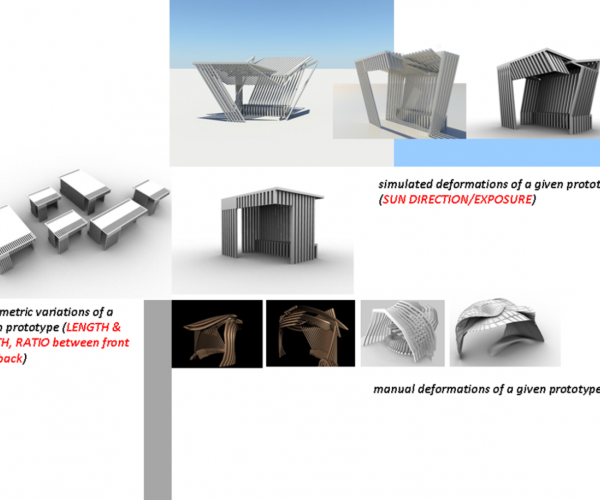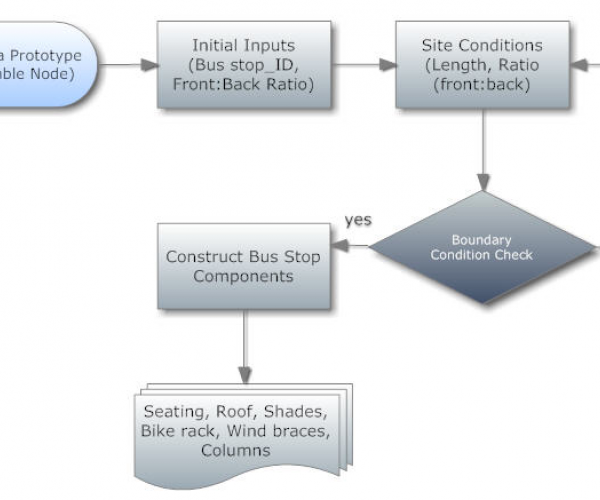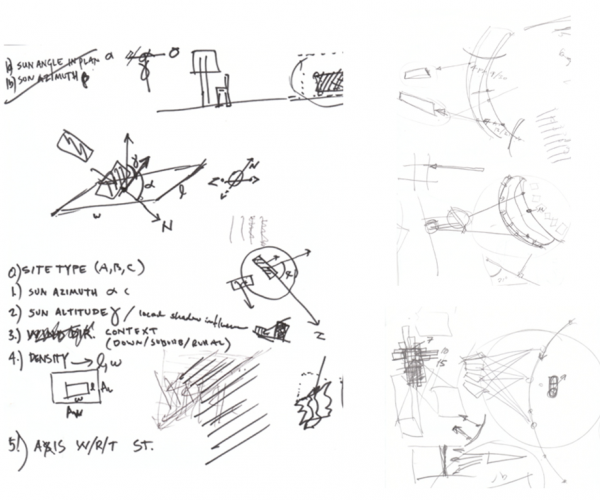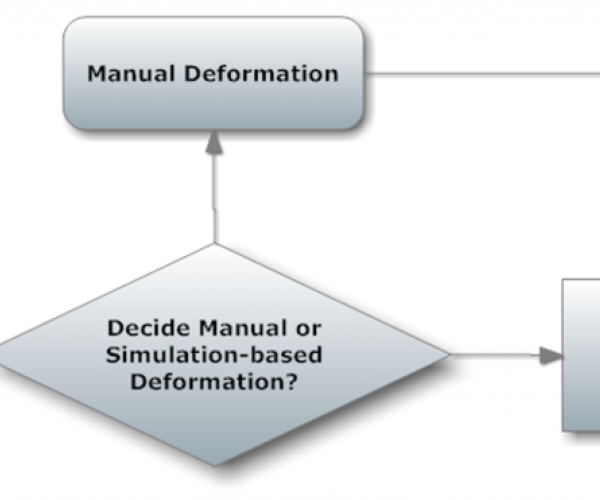A Parametric Design for 4,000 Bus Stops
This paper introduces an integrated parametric design strategy for 4,000 bus stops in Honolulu. According to various site conditions, the design of each bus stop is customized. The proposed strategy employs a simulation-based modeling in order to produce various bus stop design outcomes that fit into physical and environmental characteristics of the given sites in which they are installed.
DESCRIPTION
With combining 1) definition of a prototype, 2) parametric variation, 3) manual deformation, and 4) simulation-based deformation, an integrated parametric design strategy is developed in the design of 4,000 bus stops in Honolulu. Compared to existing design methods, which are 1) designing each bus stop individually or 2) making a mass-production of one fixed model, the integrated process provides site-specific variations of a prototype with maintaining an individual design quality of each variation and a commonality among the variations. The proposed design strategy includes only three design variables such as length, depth, and sun path in order to generate various design alternatives. Considering the complexity involved in the design of a bus stop, multi-objective criteria including construction process, cost, and structural stability have been developed for the future development of the parametric design strategy. This entails the usage of various design optimization methodologies in architectural design in order to deal with the exponential growth of design alternatives from a design computation of the multi-objective criteria for the further development of the parametric design strategy.
In this research, various combined deformation lattices were employed as an instrumental component for making an optimized morphological transformation of a bus stop according to the sun direction/ exposure simulation. It allowed a user to perform manual deformations and simulation-based deformations, which are affine changes. When a design problem requires high level of complexity in its building programming, a computational design strategy for performing topological changes of a design prototype needs to be developed to provide a higher level of design freedom and satisfy the given functional requirements.
Our understanding of where we live
is not so philosophical but rather pragmatic
Understanding urban environment with quantifiable measures has been the source of debates
Well then becomes the one of heated discussions … now possiblly the one of main trends






